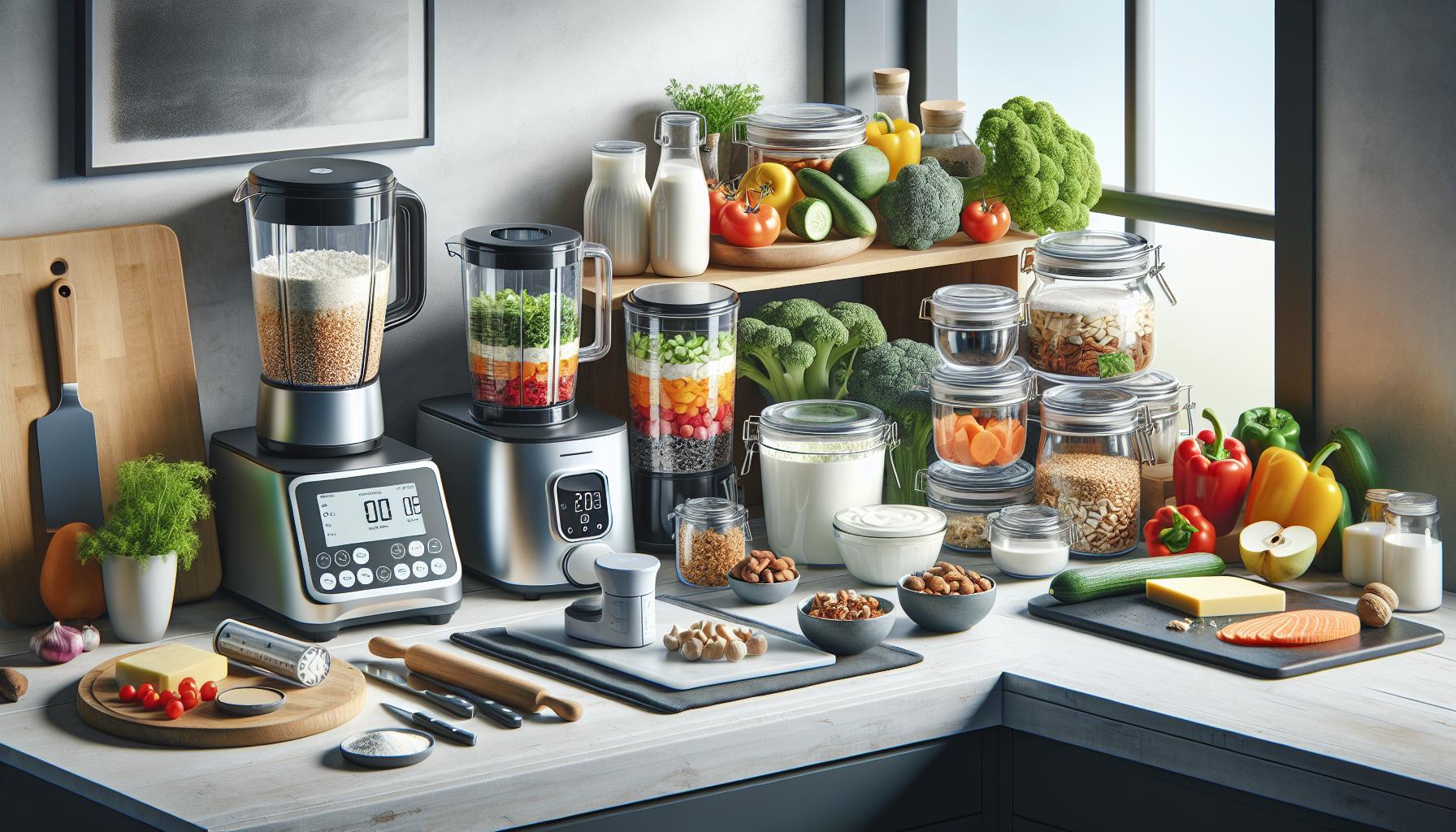Phone:
(701)814-6992
Physical address:
6296 Donnelly Plaza
Ratkeville, Bahamas.

Following the Specific Carbohydrate Diet (SCD) doesn’t mean sacrificing flavor or variety in meals. This therapeutic diet has helped thousands of people manage digestive disorders while still enjoying delicious, wholesome food. From breakfast delights to gourmet dinners, SCD-friendly recipes open up a world of culinary possibilities.
Whether someone’s new to SCD or a seasoned pro, they’ll find that these recipes transform simple ingredients into mouthwatering dishes. The best part? These meals aren’t just gut-friendly – they’re packed with nutrients that support overall health and wellness. With a few creative substitutions and the right ingredients, it’s easy to recreate favorite dishes while sticking to SCD guidelines.
The Specific Carbohydrate Diet (SCD) is a therapeutic eating protocol designed to heal digestive disorders through selective carbohydrate consumption. Created by Dr. Sidney V. Haas in the 1920s, this diet gained prominence after Elaine Gottschall detailed its principles in her book “Breaking the Vicious Cycle.”
The SCD operates on the premise that complex carbohydrates contribute to intestinal bacterial overgrowth, causing inflammation in the digestive tract. This diet eliminates all grains starch polysaccharides disaccharides to restore gut health. Single-molecule monosaccharides form the foundation of allowed carbohydrates as these require no additional digestion before absorption. The diet progressively introduces foods starting with easily digestible options then gradually expanding based on individual tolerance levels. Proper food preparation methods including fermenting yogurt for 24 hours ensure maximum digestibility.

Creating SCD recipes requires specific equipment to ensure proper food preparation and storage. The right tools enable precise measurements, proper fermentation, and effective food processing while maintaining SCD compliance.
| Equipment Type | Primary Use | Temperature Range |
|---|---|---|
| Yogurt Maker | Fermentation | 100-110°F |
| Food Dehydrator | Drying | 95-165°F |
| Meat Thermometer | Safety Check | 0-220°F |

Starting the day with SCD-compliant breakfast options provides essential nutrients while maintaining digestive health. These recipes combine wholesome ingredients to create satisfying morning meals that align with SCD guidelines.
SCD grain-free pancakes transform almond flour into light fluffy breakfast treats. The base recipe combines blanched almond flour with farm-fresh eggs honey vanilla extract. A pinch of baking soda helps create an airy texture when mixed with apple cider vinegar. The cooking process requires medium-low heat on a well-greased skillet allowing 2-3 minutes per side until golden brown. These pancakes pair perfectly with fresh berries pure honey or homemade fruit compote made from SCD-approved fruits.
SCD homemade yogurt serves as a cornerstone breakfast option packed with beneficial probiotics. The process starts with whole milk heated to 180°F then cooled to 110°F before adding yogurt starter culture. Fermentation occurs in a yogurt maker or warm environment for 24 hours creating a thick tangy product. The extended fermentation time ensures lactose breakdown making it easier to digest. This yogurt forms the foundation for breakfast parfaits when layered with honey drizzle roasted nuts fresh fruit. Preparing larger batches provides ready-to-eat portions throughout the week.

SCD-compliant main courses focus on wholesome proteins paired with vegetables, creating satisfying meals that support digestive health. These recipes incorporate permitted ingredients while maximizing flavor through simple cooking techniques.
SCD meat dishes emphasize high-quality proteins prepared with minimal ingredients. Grilled chicken breasts marinated in olive oil, herbs, and fresh lemon juice create a flavorful entree. Grass-fed beef meatballs combine ground meat with eggs, fresh herbs, and grated zucchini for moisture. Roasted turkey thighs seasoned with rosemary, garlic, and sea salt offer a protein-rich option. Pan-seared pork chops topped with caramelized onions and mushrooms provide variety to weekly meals. Slow-cooked lamb shanks braised in homemade bone broth with carrots and fresh herbs deliver tender, nourishing results.
Fresh seafood offers excellent protein sources for SCD followers. Baked salmon fillets topped with fresh dill and lemon maintain omega-3 fatty acids. Pan-seared scallops in ghee with garlic create an elegant protein option. Grilled shrimp skewers marinated in olive oil and herbs deliver a quick cooking solution. Steamed mussels in white wine broth with fresh parsley provide mineral-rich nutrition. Wild-caught cod poached in court bouillon with vegetables ensures tender results. These seafood dishes pair naturally with roasted vegetables or sautéed greens for complete meals.
SCD-compliant side dishes and snacks expand meal options while maintaining digestive health. These recipes incorporate fresh vegetables and nuts to create satisfying accompaniments and portable treats.
Roasted butternut squash cubes tossed in olive oil cinnamon provide a sweet caramelized flavor. Cauliflower rice serves as an excellent grain substitute, prepared by pulsing florets in a food processor then sautéing with garlic and herbs. Zucchini noodles paired with homemade pesto offer a pasta-like experience without complex carbohydrates. Roasted brussels sprouts caramelized with bacon bits add a savory crunch to any meal. Sautéed mushrooms in garlic butter create an umami-rich side that complements proteins perfectly. Green beans almondine combines blanched beans with toasted almond slivers for added texture and nutrition.
Honey-roasted almonds offer a portable protein source when coated in SCD-compliant honey and sea salt. Pecan butter spread on apple slices creates a satisfying combination of healthy fats and natural sweetness. Walnut date balls rolled in unsweetened coconut provide energy-dense fuel between meals. Crispy cashew clusters seasoned with rosemary and sea salt deliver a savory snacking option. Macadamia nut bark infused with vanilla extract transforms into a decadent treat. Raw almond flour crackers baked with herbs serve as versatile vehicles for dips or spreads.
The Specific Carbohydrate Diet accommodates delicious dessert options that satisfy sweet cravings while maintaining digestive health. These treats use natural sweeteners and grain-free ingredients to create satisfying confections.
Honey serves as the primary sweetener in SCD desserts, containing easily digestible monosaccharides. Raw honey provides optimal sweetness in recipes like cookies, cakes and fruit-based desserts. Date paste offers another SCD-compliant option, created by blending soft medjool dates with water until smooth. Ripe bananas add natural sweetness to baked goods, particularly in recipes for muffins and breakfast treats. Fresh fruit purees enhance desserts with natural sugars, including pureed apples, pears and berries.
SCD-compliant baked goods rely on nut flours as grain-free alternatives. Almond flour creates tender cakes, cookies and pie crusts when combined with honey and eggs. Coconut flour produces light, fluffy muffins when paired with adequate liquid ingredients. Popular treats include vanilla cupcakes made with almond flour, honey-sweetened cookies studded with nuts, fruit-filled pastries crafted from coconut flour and berry crumbles topped with crushed almonds. Each recipe maintains strict SCD guidelines while delivering satisfying textures and flavors.
Successful SCD meal planning combines strategic preparation with efficient cooking methods to maintain a consistent supply of compliant foods. The following strategies optimize time management while ensuring adherence to SCD guidelines.
These batch cooking methods save 8-10 hours of cooking time weekly while maintaining fresh SCD-compliant meals.
| Time-Saving Results | Hours Saved |
|---|---|
| Weekly Meal Prep | 8-10 hours |
| Daily Cooking | 1-2 hours |
| Shopping Trips | 2-3 hours |
Adapting traditional recipes to meet SCD requirements maintains flavor while supporting digestive health. These modifications create delicious alternatives that align with SCD guidelines.
Here are key ingredient substitutions for SCD-compliant recipes:
These substitutions maintain recipe integrity while adhering to SCD principles.
Starting a journey with SCD recipes can open up a world of delicious and healing possibilities. The diet’s proven track record in supporting digestive health combined with its versatile cooking methods makes it an effective therapeutic approach that doesn’t sacrifice taste.
Armed with the right tools kitchen equipment and proper ingredients anyone can create nourishing SCD-compliant meals. From breakfast classics to decadent desserts these recipes demonstrate that dietary restrictions don’t mean limiting flavor or enjoyment.
The key to success lies in proper planning preparation and understanding of ingredient modifications. With these recipes and guidelines individuals can confidently embrace the SCD lifestyle while enjoying satisfying meals that support their healing journey.